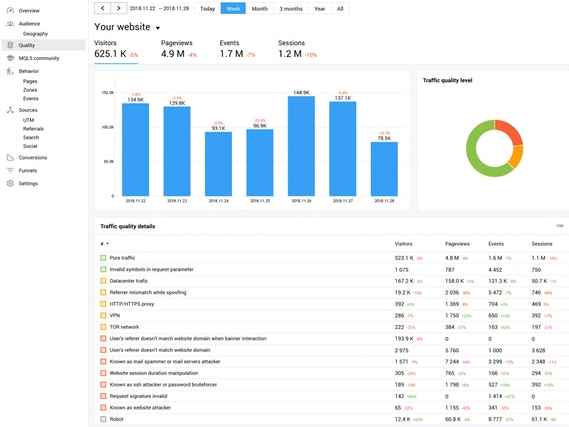Guidelines for Optimizing an eCommerce Site
When running an ecommerce store, you are likely to experience problems such as low traffic, poor sales and server issues. Though you could choose to hire an SEO expert to help sort these issues, there are steps you could take to solve the problems yourself.
However, you cannot improve what you don’t measure. Therefore, the first thing you need to do is check site metrics such as visitors, new visitors, page views, events and sessions using tools such as Finteza. This will show you which specific areas of your site need to be improved.

Here are 7 great optimization tips for eCommerce sites:
1:- Enhance product pages
When visitors land on your product pages, they should be convinced enough to buy what you are selling. Make it easy for visitors to find products using breadcrumbs based on history and product hierarchy. Use SEO friendly and catchy titles for your products to ensure your pages rank well in search engines.
Product images are very important since shoppers make decisions based on what they are seeing. Therefore, be sure to include photos that show your product from different angles and contexts. Let visitors see what the product actually looks like and how it works. If you are selling clothes or shoes, display photos of models wearing them.
Write detailed product reviews that offer details about the products being sold. However, don’t make the mistake of copying descriptions from manufacturers since they could be detrimental for your SEO.
2:- Add a blog
Every successful eCommerce site has a blog that keeps their audience coming back. Your blog can be used to make announcements, cover latest trends and answer commonly asked questions in detail. When such posts are share on social media and other forums, your store will earn more credibility and attract even more buyers.
3:- Add exit pop-ups
An exit pop-up is a call to action that appears when someone is about to leave your site. By giving promotional offers such as sweepstakes, freebies and discounts, you can significantly lower the cart abandonment rate and boost engagement. Since everyone loves a discount, such pop-ups are likely to boost your conversion rates.
4:- Optimize your pricing
If your pricing is not done properly, people will not buy. With only a few tweaks, you can optimize your pricing and increase your sales.
One strategy for price optimization is comparing two products. By placing two products side by side, you can significantly boost sales for the lower-priced option. This could work well for products that have a premium version and a lower priced version.
Another great way of optimizing your prices is by having clear calls to action (CTAs). Use action words such as ‘Get this item’, ‘Add to cart’ or ‘Buy now’ to let shoppers know what they should do next. If you are using CTA buttons, use distinct colors that will stand out on your product pages.
5:- Optimize for mobile
More people are now browsing the internet using mobile devices than desktops. Every eCommerce store should therefore be optimized for mobile to improve conversion rates. The first thing you need to do is check the render start time (RST) to see how long your site takes to load. Sites with a higher RST usually have a higher conversion rate compared to their slow counterparts. You can speed up your site by using a mobile friendly theme and using a caching plugin to load content faster.
Another effective strategy is using videos to boost your mobile conversions. Research has shown that up to 80% of consumers make a buying decision after watching a video. Product and explainer videos are ideal for this.
Optimize descriptions and page titles for mobile search. Look for search terms commonly used by mobile visitors and incorporate them in your content. Don’t forget to optimize for voice search that is becoming increasingly popular with mobile users.
6:- Use social proof
Most people read reviews about a product first before buying it. Therefore, be sure to have a product review section in your product pages. Encourage your former customer to share their experiences using your product or service. If possible, include photos of the customers to make the reviews appear credible. The more reviews your products have, the higher your chances of making more sales.
7:- Use an upsell
Upselling is a very popular tactic people use to boost eCommerce sales. This basically involves convincing existing customers to purchase a more costly version of something they are already interested in. Upselling can be done on the product page, during checkout or after checkout. Be sure to add a description that explains why the upsell is valuable. Use customer reviews to make it more appealing.
Charles Mburugu is a HubSpot-certified content writer/marketer for B2B, B2C and SaaS companies. He has worked with brands such as GetResponse, Neil Patel, Shopify, 99 Designs, Oberlo, Salesforce and Condor. Check out his portfolio and connect on LinkedIn.






